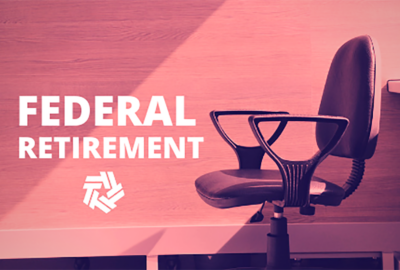Memo to Gen Z about retirement: Life is longer than you think
A modern-day retirement can last a long time, and that means retirement planning has to follow a few basics of a "bucketed approach to investing."
A modern-day retirement can last a long time, almost as long as a working career for those who make it into their 90s. That means retirement planning has to follow a few basics by what our next guest calls a bucketed approach to investments. Thiago Glieger is a principal with RMG Advisors of Rockville, Maryland, and he joined the Federal Drive with Tom Temin earlier to talk more about those basics.
Interview transcript:
Tom Temin
The statistics show that more and more people of good health and reasonable income, are in fact making it into their 90s.
Thiago Glieger
That’s right. There’s data out there from the Society of Actuaries Social Security Administration, a lot of different researchers. They’re talking about close to a 70% chance of couples who are in the good health, right, non-smokers, taking care of themselves, living into their 90s. It’s really not until we get to 95 that we start to see probabilities going down. And as the decades have gone, through the years, we see people’s average lifespan starts to increase. And so, more and more we have to start thinking about, you know, am I really going out at 80 to 83? Like everybody says, or am I going to make it to 90, in which case, I probably need to plan for a little longer. Because if you screw up and live too long, what are you going to do then?
Tom Temin
Of course, one basic approach would be to work longer, so that you have the same number of years at the other end.
Thiago Glieger
That’s right, although, you know, becoming a barista at 93 could be a little challenging, or, you know, whatever it is that someone might want to do.
Tom Temin
Right. But I mean, the standard 65 retirement, I mean, there’s still lots of people that retire at 62, 63, 64, 65. But a lot of people 71, 72, 73, 74 you see nowadays.
Thiago Glieger
You do. We have clients who are well into their 70s and they’re still working, because they love what they do. They’ve got a specialized skill set that is very marketable after they’ve left federal service. And it’s a way that they can continue to feel like they’re being fulfilled, and hey, they earn some extra income on the side.
Tom Temin
All right, but for everyone else, there is that possibility of a really long retirement tail in your life. So, talk about bucketed investments, what’s a good strategy for rethinking the longevity that you’ll have?
Thiago Glieger
Yeah, I think one way to really help protect against this kind of risk of living too long is having this bucketed approach, as you mentioned, to your investment planning. It involves having different parts of your wealth segmented into varying buckets, and each one is going to have a different job. So, for example, you might have a bucket that’s addressing the next five years of your spending, because maybe you decided you’re going to do more traveling over the next couple of years. So, you’ve got your income for that travel set up in a particular way. And then 10 years from now, you also need income, because maybe you’re slowing down travel, but you’re going to start a college education fund for some of your grandchildren. And so, you’re starting to address these different needs both now and in the future, adjusted for inflation. And what that allows you to do is you’ve got parts of your money growing for your future, continuing to fight inflation, and replacing some of that spending that you’re doing, which is going to help increase the longevity of your money. But at the same time, you also have other parts that are addressing, hey, I need money right now. And I can’t invest in really growth-oriented investments, because that’s going to create too much volatility. I might lose the money in the short term, and I need to use it. So, by segmenting your money in this way, you get to achieve multiple objectives at the same time.
Tom Temin
But then you also have to know what the returns are for various instruments that you’re going to put into the buckets or that the buckets will be put into.
Thiago Glieger
That’s right. And, you know, I’ll have federal employees say to me, hey, why don’t we just sell when the economy looks bad? And then buy again, when things look good again. You know, and I always joke with them. Listen, if you can find somebody who can do that with repeated success, let me know, because I’d love to hire them. And so, we have a good sense for how certain asset classes can behave over time. So, things like the S&P 500, which is the TSP C fund, we know how overtime those things tend to behave. And it’s different than how a small cap fund or a mid cap fund would behave, or bonds or anything else. But we rarely know what the markets are going to do next year. And frankly, anyone telling you otherwise is, at best, making an educated guess. And so, the key to remember, and this is this is the most important part, people need to remember that they should build portfolios based off of needs, over which the concept of timing has influence but not interference. And that’s what’s going to give you the best chance of achieving your objectives. We can’t know what the market is doing next year, but we know that 10 years from now, the S&P is probably going to be higher than where it is today. So, we know that the S&P is a long-term investment. And when we think about short-term needs, what kinds of investments are going to best suit that? There’s money markets, cash, things like bonds, right? These are things you should talk to your planners about.
Tom Temin
You point to something that’s kind of a recent reemergence, and that is money markets and CDs, which I remember from the 80s. Some of them paid really high double-digit pay offs for a year or two years, then they disappeared when inflation disappeared. Now that inflation is back, maybe not double-digit instruments, but there are things that pay, holy cow, 3%, 4%, 5%. That’s a new phenomenon for a lot of millennials and Generation Z-ers.
Thiago Glieger
That’s right, especially for people who have some cash aside that they’re leaving in the bank, for you to get $500 on every $10,000 that you have sitting in cash in the bank. That’s a really high amount compared to what it’s been in the last several years. And, so, if you’re sitting on 20, 30, 40, 50, $60,000, of cash, you can be using instruments like money markets. And if you use US Treasury money markets, you’ve got the full faith and credit of the US government behind them. Money markets are daily liquid, you can access the money the very next day. And this is a great way to be able to kind of keep your money working for you. Instead of just cash in the bank in your checking account, which is really losing purchasing power every day that it sits there.
Tom Temin
We are speaking with Thiago Glieger, a principal with RMG Advisors in Rockville, Maryland. And a lot of people as they age worry about the catastrophic health event that might tax what is available from their health care plan, even Medicare, let’s face it, has pretty strict limits on what you can get out of it. And, so, people worry about outrunning those resources. What are some ways to think about avoiding that?
Thiago Glieger
I think a lot of people tend to not plan to have hundreds of 1000s of dollars into their 90s. Because they’re thinking, hey, I’m not going to live well into the hundreds, I don’t need a million dollars by the time I’m 90. I could have drawn my assets down. But then to your point, what happens if there’s a health scare, what if there’s a healthcare event, or what we call a long term care event, where you have additional needs for two to three years, which is the average amount, and it could range to thousands of dollars a month. We’ve had clients that have had to spend $10,000 a month for that additional support. So, you have to address the risk in a couple of ways. Either you’re self-insuring, which is you’re holding some of that money aside earlier in life, and investing it for your future so that you’ve got a sum later waiting for you. Or you can pass on some of that risk to something like an insurance carrier. So, the use of long term care insurance can be very helpful. I really liked the federal long term care insurance program. Unfortunately, it’s not open to new applicants still. But anybody who’s in there, I think it makes a lot of sense for people to really consider continuing to pay those premiums. Because if we look at the cost of health care, over time, it rises faster than regular inflation. So, our cheeseburgers are rising at one rate and the cost to take care of ourselves for eating those cheeseburgers is usually twice as fast and growing costs. And that’s a challenge, because how do we grow our money fast enough, right?
Tom Temin
Or just keep eating lots of cheeseburgers and make it to 90 and have some good years, and then forget the last five bad years because you’ll be gone? Just kidding.
Thiago Glieger
That’s exactly what they want.
Tom Temin
Yeah, just if you would maybe talk about the idea of the fixed index annuities and the value or choice of those.
Thiago Glieger
Federal employees are often looking at fixed indexed annuities to be able to still participate in market growth, while having an insurance wrapper around it through the form of an annuity to protect them against market volatility. So, a lot of ways this is pitched to them, as they’ll say, well, you can still get growth in the markets, but protect your principal from any decline in your in your portfolio or your TSP values. That can be very attractive for people who are very skittish or risk-averse in investing in equities or stock, which is what’s going to grow your portfolio over time. The one caveat that I have to put out there with these things is that often there’s a lot of strings attached, right? Sometimes you’ll hear that there are no fees, and no fees doesn’t necessarily mean that there are no costs. There are restrictions to how much you can earn, there’s restrictions to how much you can take out. There’s all kinds of things that again, if you are paying for a guarantee, they’re saying you’re not going to lose principle, then how are you paying for that? You’re paying for that in some kind of way. But that can be an instrument that at least allows somebody who’s so scared of the markets to put their money to work a little bit so that they’re at least earning something. Because if you hang out in the G fund for all of your retirement, you’re going to have problems come 15, 20 years into retirement.
Eric White
Thiago Glieger is a principal with RMG Advisors of Rockville, Maryland. We’ll post this interview at federalnewsnetwork.com/federaldrive. Hear the Federal Drive on demand. Subscribe wherever you get your podcasts.
Copyright © 2025 Federal News Network. All rights reserved. This website is not intended for users located within the European Economic Area.
Tom Temin is host of the Federal Drive and has been providing insight on federal technology and management issues for more than 30 years.
Follow @tteminWFED






